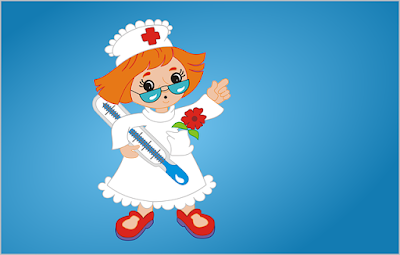The following are tips to help your children at home if burns, scalds, bruises and other physical injuries occur.
1. Burns and Scalds
General treatment Run cold water until the pain stops for about 10-30 minutes. Avoid over-cooling the person if a large area has been burnt. Do not remove clothing if stuck on skin. Do not apply ice, medicine, ointment, grease, or butter.
Also assess airway, breathing and circulation for any injuries.
Burns with blisters
Avoid breaking the blister, seek pediatrician help on how to cover the burn, and seek immediate help if the burn has occurred on face, hands, feet and/or genitals.
Large or deep burns
Cool the burn, Call 911 or emergency number and make sure to keep the child warm by covering the body with a clean sheet and a blanket as you wait for help.
Electrical burns
Don’t touch the child with bare hands if still stuck onto a power source - turn off the power and use a wooden broom handle or a non-conductor to cut him or her off. Call for doctor’s attention.
 |
| Source: pixabay.com |
2. Skin wounds
In addition to tetanus vaccination, check with a pediatrician if a tetanus booster is necessary in case there are open wounds.
(a) Bruises
Cool compresses are recommended. Pediatrician attention is necessary for swelling, persistent pain, and crush injury. You might also give the child acetaminophen for pain.
(b) Cuts
Clean with water and use clean cotton to stop bleeding by holding it on pressure for 1 to 2 minutes. Apply antibiotic ointment and cover with clean bandage for less serious cuts.
Large, deep and wide open cuts require pedestrian attention. You need to call 911 for major bleeding and hold with pressure until help arrives.
(c) Scrapes
Rinse with clean and running tap water for 5 minutes but without detergents, alcohol or peroxide. Apply antibiotic ointment and bandage - use a bandage that will not stick to the wound.
(d) Splinters
Use tweezers to remove small splinters and clean the area. Pediatrician help may be needful for cases where you are unable to remove splinter.
(e) Puncture wounds
Do not try to remove large objects such as a knife and a stick from a wound. Instead, call 911 or seek emergency help. Pediatrician assistance may be needful for puncture wounds- such as a booster tetanus shot.
Brush off any poisonous substance while wearing rubber gloves. Take off contaminated clothing and wash any exposed part with water or mild soap and water if appropriate. Avoid scrubbing. Call Poison Help.
Emergency department should be called if the child is experiencing trouble breathing, becomes unconscious, or is drowsy. Take the poisonous substance with you to the hospital.
Severe allergy might be signaled by swelling, breathing difficulties, and paleness. Call emergency immediately. You might ask neighbors and relatives if they have any emergency medicine for such.
3. Skin exposure to reagents
Brush off any poisonous substance while wearing rubber gloves. Take off contaminated clothing and wash any exposed part with water or mild soap and water if appropriate. Avoid scrubbing. Call Poison Help.
Emergency department should be called if the child is experiencing trouble breathing, becomes unconscious, or is drowsy. Take the poisonous substance with you to the hospital.
4. Allergy
Severe allergy might be signaled by swelling, breathing difficulties, and paleness. Call emergency immediately. You might ask neighbors and relatives if they have any emergency medicine for such.
EmoticonEmoticon